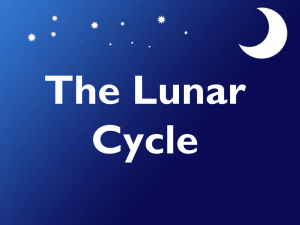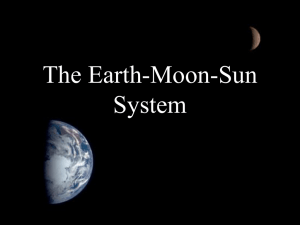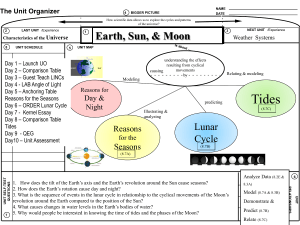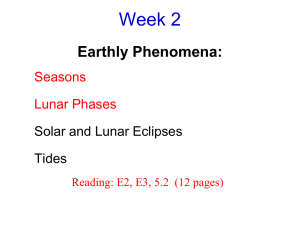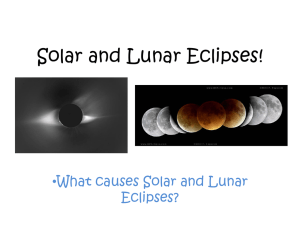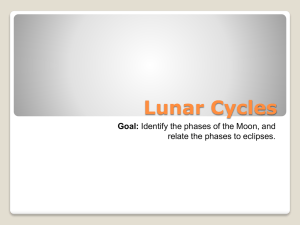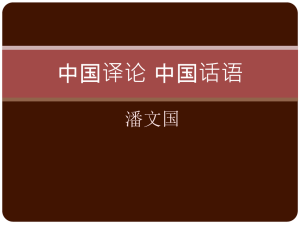Phases of the Moon
advertisement
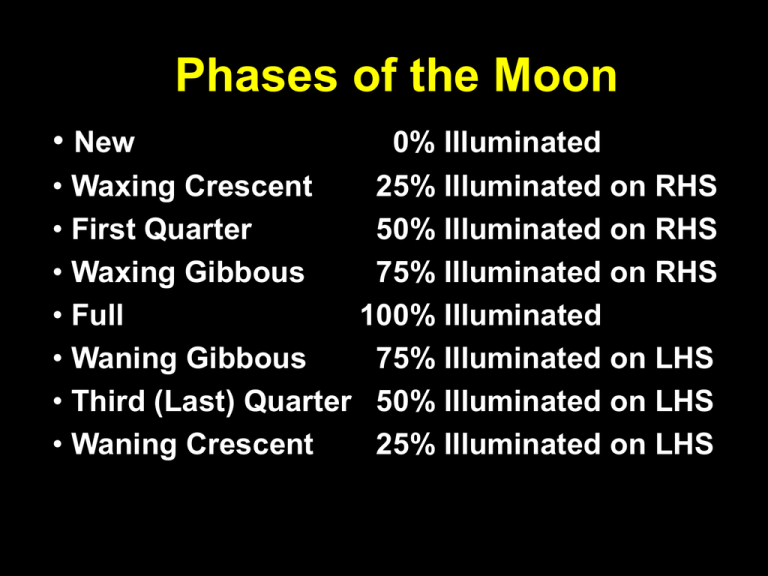
Phases of the Moon • New 0% Illuminated • Waxing Crescent 25% Illuminated on RHS • First Quarter 50% Illuminated on RHS • Waxing Gibbous 75% Illuminated on RHS • Full 100% Illuminated • Waning Gibbous 75% Illuminated on LHS • Third (Last) Quarter 50% Illuminated on LHS • Waning Crescent 25% Illuminated on LHS Rising/Meridian/Setting Times Phase New Waxing Crescent First Quarter Waxing Crescent Full Waning Gibbous Third Quarter Waning Crescent Rising 6 am 9 am Noon 3 pm 6 pm 9 pm Midnight 3 am Meridian Noon 3 pm 6 pm 9 pm Midnight 3 am 6 am 9 am Setting 6 pm 9 pm Midnight 3 am 6 am 9 am Noon 3 pm *Assuming the moon is always on the celestial equator and above the horizon 12 hours per day. Lunar Periods • Sidereal Period – 27.3 days – The time between successive alignments of the earth, moon, and a star – The true orbital period of the moon • Synodic Period – 29.5 days – The time between successive alignments of the earth, moon, and the sun – The period of the cycle of lunar phases Lunar Eclipses • Total Lunar Eclipse – The moon is entirely inside the earth’s umbra • Partial Lunar Eclipse – The moon is partially inside the earth’s umbra • Penumbral Lunar Eclipse – The moon is inside the Earth’s penumbra – These happen regularly and no one notices. The brightness of the moon only decreases by 10% to 20% Solar Eclipses • Total Solar Eclipse – The moon completely obscures the sun for an observer at this location on the Earth • Partial Solar Eclipse – The moon partially obscures the sun for an observer at this location on the Earth • Annular Solar Eclipse – The moon is near apogee and its angular diameter is insufficient to completely cover the sun. An observer for whom the moon and sun are aligned will see a ring of the sun around the moon Tides - caused by differential gravitational forces exerted by the moon (the moon pulls more on one side of the earth than the other) - Even though the sun’s gravitational force is much larger than the moon’s, its differential force is smaller (since the size of the earth is small compared to the earth-sun distance) - This moon’s differential force causes “water bulges” on the earth on both sides of the line to the moon. Tides are caused by the Earth’s rotation carrying observers through a water bulge. Thus, typically high tide occurs twice a day. - Neap Tides – weak tides which occur when the moon’s and sun’s pull are perpendicular - Spring Tides – strong tides when the moon and sun are aligned.


